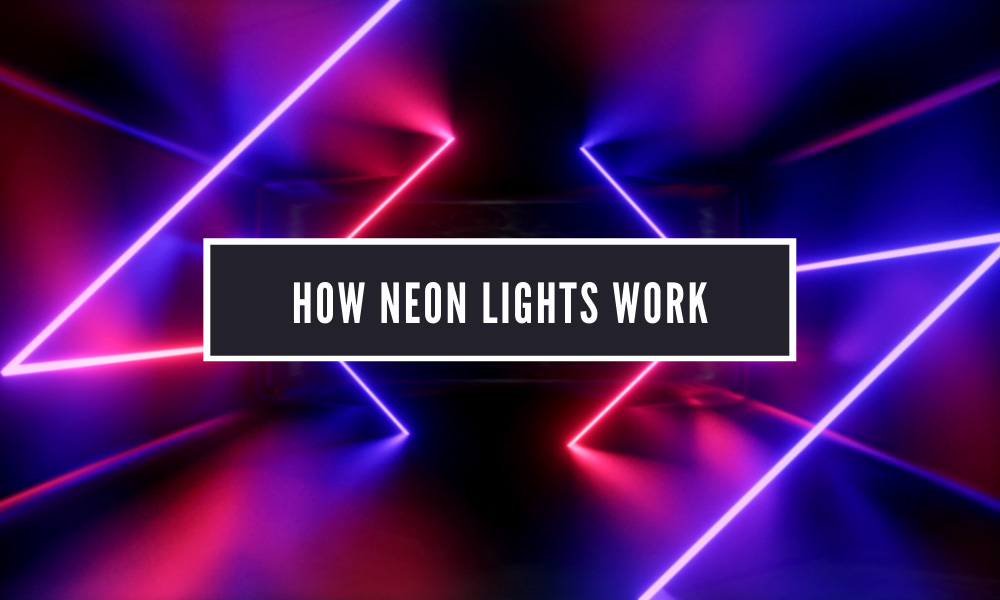How Neon Lights Work
Far from filaments and wiring, the process of how neon lights work is much more complex. It requires pressurized gas and microscopic chemical reactions.
by Jantec Neon • October 24, 2019

Neon signs have been lighting up our lives since the early 1900s. Their colorful lights cast a warm glow around us, calling up feelings of nostalgia and happiness. The design and technology used in neon lights are quite unlike that used in most other lights. This brief overview of how neon lights work will give you a deeper insight into the inner workings of this unique lighting style.
Creating Neon Lights
Neon lights use much of the same technology today as when they were first invented. Derived from the earlier Geissler tube (a broken glass tube containing gas well below atmospheric pressure), neon lights also utilize glass tubing and pressurized gases. To start, a glass bender hollow heats and shapes a glass tube. This can be quite tricky work, as one wrong step can cause the entire tube to crack or shatter. A worker will attach a positive and negative electrode to the opposite ends of the tube and remove impurities and air. This will create a vacuum chamber within the tube.
Once the tube has been thoroughly prepared, you can fill it with neon gas. Neon is one of six naturally occurring noble gases. Noble gases are odorless and colorless, though neon does produce red photons when agitated. They are also monatomic and stable. This means they possess a very low chemical reactivity and will require a bit of agitation to incite a reaction and produce light.
A professional will then attach the electrodes to a high-voltage power source in a process that some refer to as the burning of the tube. As you introduce electricity into the system, the neon atoms become agitated and pull apart. This makes them unstable and more reactionary. When these atoms pull apart, they will often lose electrons and become positively charged ions. With a now positive charge, the ions will seek to rebalance their charge and will move toward the negative electrode. Simultaneously, the lost electrons, which have a negative charge, will begin to move toward the positive electrode. As the electrons and ions rush past each other in search of their desired electrode, they collide. During these collisions, the atoms and ions emit photons of red light that are visible to the naked eye. The process of how neon lights work is quite complex and takes place within a very short time. Because the reactions are so small and happen so quickly, we perceive one long, continuous stream of light, rather than a million small bursts.
A Rainbow of Possibilities
Though neon light emits red photons, neon signs are available in a wide variety of colors. One way to achieve a different colored neon light is to mix the neon with another noble gas. Neon and argon, for instance, produce green light, while argon and xenon create purple light. You can also create neon sign letters in different hues by painting the glass tube’s interior walls with phosphors in various shades. Using a blue phosphor and a red neon tube, for example, you can create a pink neon sign.

